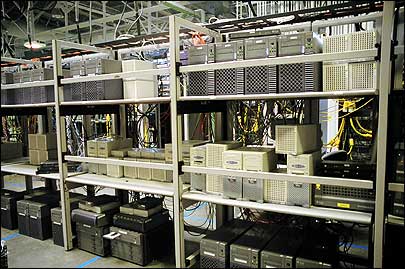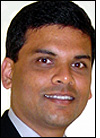Sun Microsystems, based in Menlo Park, Calif., says it is offering an RFID solution to help organizations more quickly and accurately track and manage their physical assets, count inventory and track ancillary data on assets, such as their age, expiration date, temperature or movements throughout a facility.
To create this system—the Sun RFID Industry Solution for Physical Asset Tracking—Sun partnered with Applied Logistics Solutions, an Irvine, Calif., provider of asset-tracking software, as well as RFID hardware vendors Intermec Technologies, based in Everett, Wash., and Intelleflex, located in San Jose, Calif.
The Applied Logistics tracking software runs on Sun’s Solaris 10 operating system, Sun Java Enterprise System and Sun Java System RFID software, Sun’s Java-based RFID middleware that filters and aggregates data collected by the Intermec fixed and handheld readers. Intelleflex semi-passive tags provide a longer read range than fully passive tags and can be used alone or in combination with temperature or other sensors to monitor the location and condition of an asset. Intermec passive tags, alternatively, can track assets for which this additional data and a long read range are not required.
Tags are placed on items and encoded with unique IDs linked to those items in a database. Fixed and/or portable readers are used to interrogate the tags. Associating the reads with the fixed readers that captured them lets users know how many tagged assets there are in a given location. Business rules can be set to trigger alerts as tagged assets are moved.
Vijay Sarathy, Sun’s director of RFID product marketing and strategy, says his company is talking to potential customers in the retail industry about tagging bar code scanners, walkie-talkies or similar assets. He claims hospitals are also interested in a solution like Sun’s to track assets such as IV pumps and wheelchairs.
According to Sarathy, the solution can also help users plan for future needs. “From an economic standpoint,” he explains, “it’s good to know how your assets are being utilized so that the operations people can better plan their capital expenses, and their maintenance schedules and expenditures. That’s another benefit we see, because there is not enough asset utilization information that is collected right now, and RFID could potentially really help that.”
Sun is also likely to enjoy internal benefits from its new asset-tracking platform, which it has deployed in two locations—the Sun Shared Lab Facility in Newark, Calif., and the Sun Tradeshow Equipment Distribution Center in Milpitas, Calif.
Within the 6,000-square-foot Newark lab, Sun maintains more than 10,000 servers and other computing devices. Sarathy says Sun used to spend $2.1 million to hire a third party to inventory all of these assets once a year, but still could not account for millions of dollars’ worth of equipment. These days, the bar codes once used to count the IT gear have been replaced with passive EPC Class 0+ tags, provided by Symbol.
An in-house team walks through the Sun facility weekly and conducts an inventory, using a handheld interrogator to read tags fastened to assets, as well as to specific fixed objects, such as server racks. If no fixed reader is installed within an asset tag’s read range, Sun can determine the asset’s location by comparing the time its tag was read with when the fixed object’s tag was read. It takes less than an hour to do a complete inventory, he says.

The system has in been in use for six months, and Sarathy says Sun considers the system a significant improvement over the bar-code tracking it used previously. He adds that employees in the Newark facility have more success finding specific assets now. Sun now saves the $2.1 million a year it previously spent for the third-party inventory service at Newark. The company says it has spent roughly $200,000 to deploy the Newark system, but being able to get an accurate view of the assets within the facility should help Sun avoid duplicate or unneeded hardware purchases.
At the Sun Tradeshow Equipment Distribution Center, Sun manages several thousand assets that are shipped across the globe for Sun and partner events and tradeshows. The center has also deployed the asset-tracking system. Several times a week, shipments of various sizes leave the 5,000-square-foot Milpitas warehouse bound for local and international events.
As workers gather displays and electronic equipment for shipment, they read the Symbol EPC Class 0+ tags attached to the items. On-site personnel use handheld readers sent along with the shipment to conduct inventory of the assets during the event in order to ensure none are lost or stolen. The tags are again used to receive the items back into inventory at the distribution center.
The Sun RFID Industry Solution for Physical Asset Tracking is available now. Pricing information has not yet been released.


